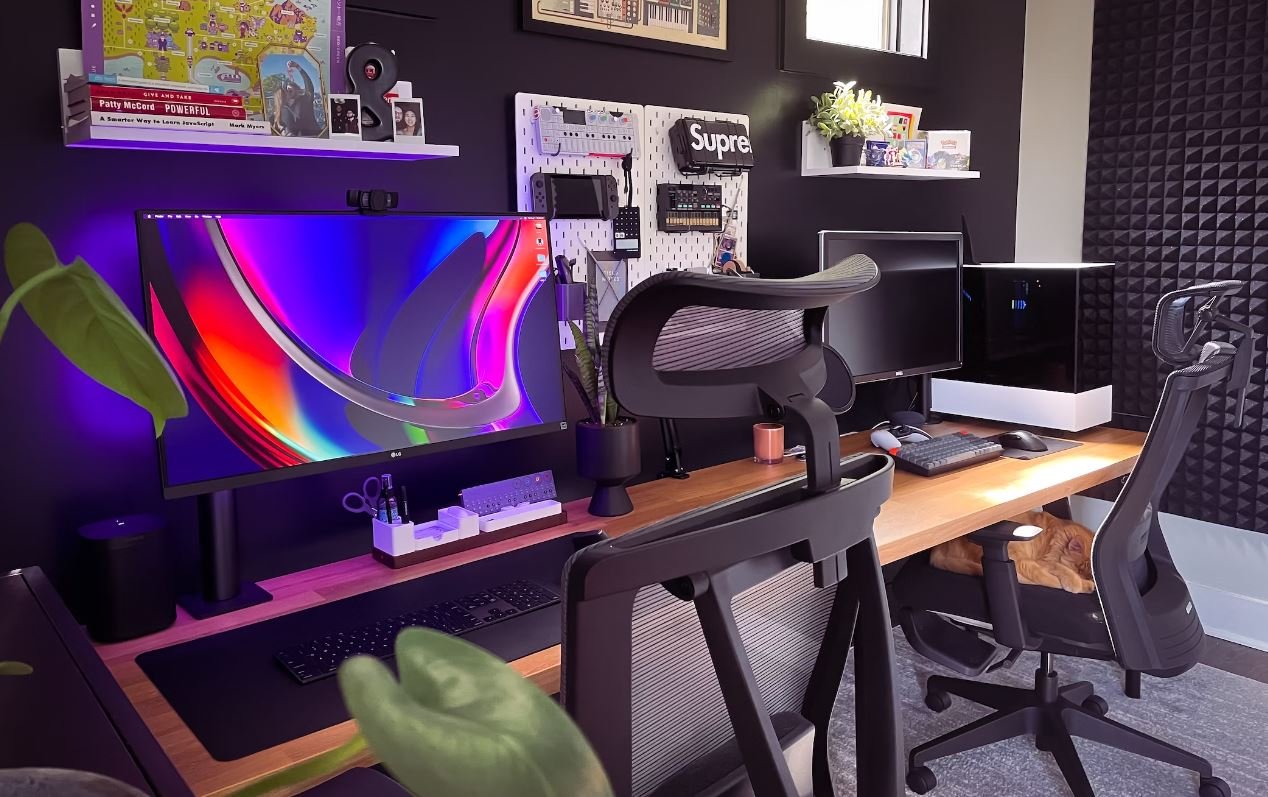Video and Audio Editor
Video and audio editors are professionals responsible for editing and enhancing video and audio content to create a polished final product. They work in various industries, from film and television production to advertising and content creation.
Key Takeaways:
- Video and audio editors enhance and edit video and audio content to create a polished final product.
- They are skilled in using specialized software and tools to manipulate and improve audio and visual components.
- Attention to detail, creativity, and strong technical skills are essential in this profession.
Video and audio editors use their technical skills and creativity to enhance the visual and auditory experience of various media content.
Roles and Responsibilities
Video and audio editors have a range of responsibilities:
- Reviewing raw footage and audio recordings to select the best takes and clips.
- Trimming and sequencing video and audio segments to create a coherent narrative or structure.
- Applying color correction, filters, and effects to enhance visual elements.
- Removing unwanted background noise, adjusting levels, and improving overall audio quality.
- Adding and synchronizing music, sound effects, and voice-overs.
- Collaborating with directors, producers, and other team members to ensure the project meets the desired vision and objectives.
Skills and Qualifications
Successful video and audio editors possess the following skills and qualifications:
- Technical proficiency: Proficient in using video and audio editing software such as Adobe Premiere Pro, Final Cut Pro, and Avid Media Composer.
- Creativity: Ability to bring an artistic and creative vision to the editing process.
- Attention to detail: Meticulous in reviewing and fine-tuning footage and audio to ensure high-quality results.
- Problem-solving: Ability to troubleshoot technical issues and find solutions.
- Communication: Excellent communication skills to collaborate effectively with team members.
Income Range and Job Outlook
Video and audio editing careers offer a range of opportunities, and the income can vary based on experience and industry. Here is a breakdown:
| Experience Level | Annual Income Range |
|---|---|
| Entry Level | $30,000 – $45,000 |
| Mid-Level | $45,000 – $70,000 |
| Senior Level | $70,000+ |
Video and audio editing is a dynamic field with a steady demand for skilled professionals.
Education and Training
While a formal education is not always required, many video and audio editors have a degree or certification in film editing, media production, or a related field. Training programs and workshops are also available to enhance technical skills and stay updated with the latest industry trends.
In Conclusion
Video and audio editors play a crucial role in transforming raw footage and audio into captivating and well-crafted final products. With their technical expertise and artistic vision, they add value to various industries such as film, television, advertising, and content creation.

Common Misconceptions
Video and Audio Editor is a multifaceted field with a wide range of misconceptions surrounding it. It is important to debunk these misconceptions to better understand and appreciate the skills and responsibilities of a video and audio editor.
Misconception 1: Video and audio editing is a simple and easy task
Contrary to popular belief, video and audio editing is a complex and skilled task that requires technical expertise and creativity.
- Video and audio editing involves knowledge of various software and tools.
- Editors need to have an understanding of storytelling techniques to create compelling content.
- Attention to detail is crucial to ensure seamless and professional edits.
Misconception 2: Editing can be done quickly
Many people underestimate the time and effort required for video and audio editing, assuming it can be completed in a short period.
- Editing involves going through hours of footage and selecting the best moments.
- Audio editing includes tasks such as cleaning up sound, adding effects, and syncing audio with video.
- The editing process often requires iterations and revisions to achieve the desired outcome.
Misconception 3: Video and audio editing is only about cutting and pasting clips
A common misconception is that video and audio editing solely involves trimming and rearranging clips. However, it encompasses much more.
- Editors need to analyze the narrative structure and timing of the content.
- Various editing techniques, such as color correction and audio mixing, are used to enhance the visual and auditory experience.
- Editing also involves adding transitions, effects, and titles to create a polished final product.
Misconception 4: Anyone can be an editor
While it is true that anyone can learn the basics of video and audio editing, becoming a skilled editor requires dedication and time.
- Learning software and mastering editing techniques is a continuous process.
- Understanding the artistic and technical aspects of editing takes years of practice.
- Developing an eye and ear for detail is essential to produce high-quality work.
Misconception 5: Editors only work on films and TV shows
Though editors are prevalent in the film and television industry, their skills are highly sought after in various other fields as well.
- Video and audio editors are essential in advertising agencies to create commercials.
- They are instrumental in the production of music videos and online content.
- Video and audio editing skills are also utilized in corporate settings for training videos, presentations, and promotional materials.

The Evolution of Video Editing Software
Over the years, video editing software has transformed the way videos are produced and edited. This table showcases some notable video editing software and their release dates:
| Software | Release Date |
|---|---|
| Adobe Premiere Pro | December 16, 1991 |
| Final Cut Pro | June 21, 1999 |
| Avid Media Composer | August 1, 1989 |
Popular File Formats for Video Editing
Video editing often involves working with various file formats. This table presents some widely used video file formats:
| File Format | Description |
|---|---|
| MP4 | A popular format compatible with most devices and platforms. |
| AVI | A format developed by Microsoft, known for its broad support. |
| MOV | A format commonly used for Apple devices and software. |
Top Video Editing Tools for Beginners
For those new to video editing, several user-friendly tools are available. Here, we highlight three popular options:
| Tool | Platform |
|---|---|
| iMovie | iOS, macOS |
| Windows Movie Maker | Windows |
| Shotcut | Windows, macOS, Linux |
Key Skills for Video Editors
Video editing requires a combination of technical skills and creativity. Here are some essential skills for video editors:
| Skill | Description |
|---|---|
| Attention to detail | Ability to spot errors or inconsistencies in footage. |
| Understanding of pacing | A sense of timing and rhythm to create engaging videos. |
| Knowledge of software | Proficiency in using video editing software and related tools. |
Technical Aspects of Video Editing
Video editing involves various technical elements. Here, we explore some key technical aspects:
| Aspect | Description |
|---|---|
| Resolution | The number of pixels in a video frame, determining its clarity. |
| Frame rate | The number of frames displayed per second, affecting video smoothness. |
| Bitrate | The amount of data processed per second, influencing video quality. |
Audio Editing Software and Their Features
Audio editing plays a crucial role in video production. Here, we highlight various audio editing software and their notable features:
| Software | Notable Features |
|---|---|
| Adobe Audition | Advanced noise reduction and audio restoration tools. |
| Audacity | Support for multi-track audio editing and effects. |
| Pro Tools | Professional-grade audio editing and mixing capabilities. |
Video and Audio Editing Careers
Video and audio editing skills open doors to a range of career opportunities. Here are three careers in this field:
| Career | Description |
|---|---|
| Video Editor | Responsible for editing raw footage and creating cohesive videos. |
| Sound Designer | Creates and manipulates audio elements to enhance the video experience. |
| Audio Engineer | Handles audio recording, mixing, and mastering processes. |
Modern Trends in Video Editing
The video editing industry continuously evolves to meet changing demands. Here are some current trends in video editing:
| Trend | Description |
|---|---|
| 360-Degree Video Editing | The ability to edit and manipulate videos captured with 360-degree cameras. |
| Mobile Video Editing | Editing videos on-the-go with mobile applications and software. |
| Real-Time Collaboration | Video editors collaborating remotely in real-time for efficient workflow. |
Conclusion
Video and audio editing have come a long way, revolutionizing the filmmaking and multimedia industry. From the evolution of software tools to the emergence of new trends, video and audio editors play a vital role in creating impactful visual and auditory experiences. By continuously adapting to technological advancements and honing their skills, video and audio editors remain at the forefront of creative storytelling.
Frequently Asked Questions
How do I cut a video using an editor?
What formats can a video editor support?
Can audio be added to a video using an editor?
What effects can be applied to a video using an editor?
Is it possible to edit the audio separately from the video?
Can a video editor remove background noise from the audio?
What are the system requirements for video editing software?
Can a video editor export videos in different resolutions?
Does a video editor provide options to adjust playback speed?
Can a video editor stabilize shaky footage?




